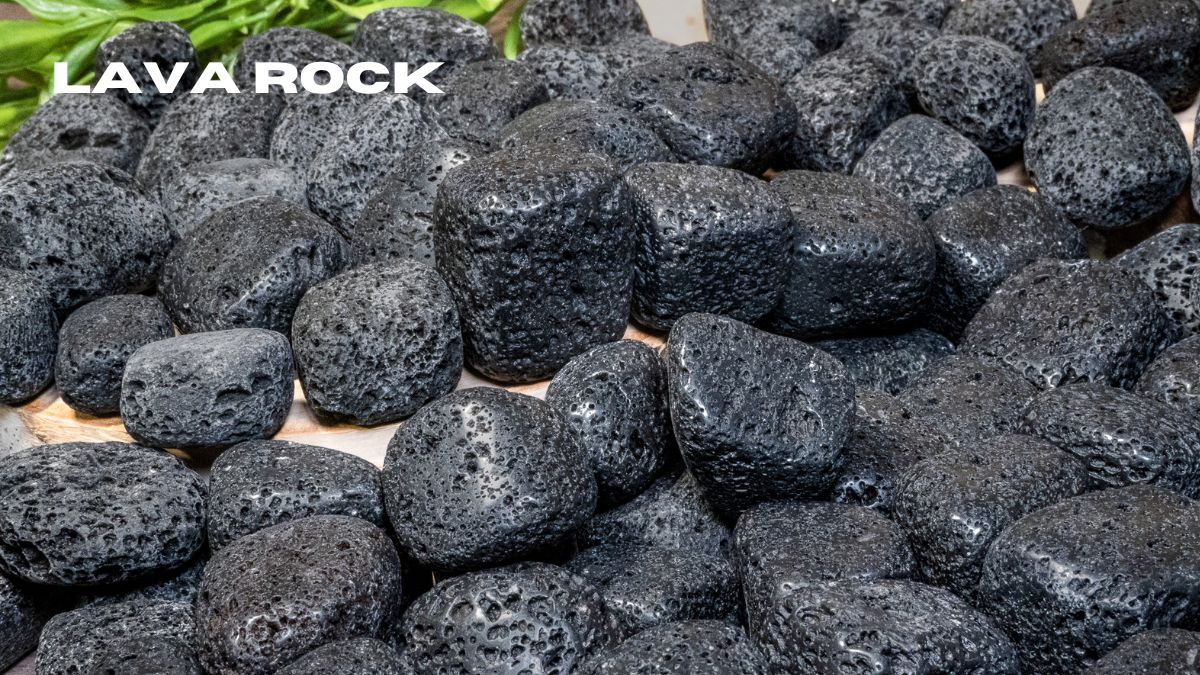Topic
Reflecting on the Past to Shape the Future: Lessons Learned from the Progression of 2023-1954

As we journey through the pages of history, we uncover a treasure trove of lessons that shape our present and guide us towards the future. Today, let’s embark on a reflective exploration from 2023-1954, delving into technological advancements, social shifts, and political landscapes that have sculpted the world as we know it. Join me on this insightful voyage as we unravel the tapestry of time to glean wisdom for tomorrow.
The Importance of Reflecting on the Past
Reflecting on the past is like flipping through the pages of a historical novel, each chapter holding valuable lessons and insights. It allows us to trace our footsteps back in time, understanding where we have come from and how it has shaped our present reality. The past serves as a guiding light, illuminating paths forward by showing us what worked well and what pitfalls to avoid.
By delving into history, we can unravel patterns and trends that might otherwise go unnoticed. It provides context to current circumstances and offers a fresh perspective on challenges we face today. Learning from both successes and failures of the past empowers us to make informed decisions for the future.
In this fast-paced world filled with constant change, taking a moment to pause and reflect on the past can be grounding. It reminds us of our roots, values, and aspirations – steering us towards growth and progress.
Lessons Learned from the Progression of 2023-1954
As we delve into the progression from 1954 to 2023, one of the key lessons learned is the rapid evolution of technology. From the introduction of computers in the mid-20th century to today’s era of artificial intelligence and virtual reality, technological advancements have reshaped our world.
Moreover, examining social and cultural changes over these decades reveals a shift towards greater inclusivity and diversity. Society has become more interconnected than ever before, fostering global conversations on important issues like equality and sustainability.
Additionally, political shifts from 1954 to 2023 highlight the importance of adaptability in governance. With changing ideologies and geopolitical landscapes, leaders must navigate complexities while staying true to their values.
Reflecting on this progression offers valuable insights for shaping our future. By understanding past trends, we can make informed predictions for what lies ahead in 2054 and beyond. It also underscores the need for proactive preparation to tackle potential challenges that may arise along the way.
A. Technological Advancements
The progression from 1954 to 2023 has been marked by remarkable technological advancements that have revolutionized the way we live, work, and communicate. In 1954, technology was limited compared to what we have today. The introduction of computers in the mid-20th century paved the way for a digital revolution that continues to shape our world.
Fast forward to 2023, and we are living in a time where artificial intelligence, virtual reality, and blockchain technology are becoming increasingly integrated into everyday life. From smartphones that connect us instantly with people across the globe to self-driving cars that could soon dominate our roads – the possibilities seem endless.
As we reflect on this technological journey spanning decades, it’s clear that innovation knows no bounds. Looking ahead to 2054, one can only imagine what marvels await us in terms of technological progress. Will we be living in a fully automated society? Only time will tell as technology continues its rapid evolution towards an uncertain yet exciting future.
B. Social and Cultural Changes
The evolution of social and cultural norms from 1954 to 2023 has been nothing short of remarkable. In the past decades, we’ve witnessed a significant shift in attitudes towards diversity, equality, and inclusion. The rise of social media platforms has allowed voices that were once marginalized to be heard on a global scale.
Cultural appropriation and representation have become hot topics for discussion, sparking important conversations about respect for different traditions and backgrounds. Additionally, the #MeToo movement shed light on issues of sexual harassment and gender inequality, leading to tangible changes in workplace dynamics.
Furthermore, the entertainment industry has seen a push for more diverse storytelling and representation across film, television, and music. This newfound emphasis on inclusivity has not only enriched our cultural landscape but also challenged long-standing stereotypes.
As we look towards the future, it is crucial to continue fostering empathy and understanding among diverse communities while celebrating the richness that comes from embracing our differences.
C. Political Shifts
Political shifts between 1954 and 2023 have been a rollercoaster of changes, impacting societies worldwide. The Cold War era saw tensions rise to unprecedented levels as superpowers engaged in proxy wars. Movements for civil rights and gender equality gained momentum, challenging traditional power structures.
The fall of the Berlin Wall in 1989 marked the end of an ideological divide and paved the way for globalization. The rise of populism in recent years has shaken established political norms, leading to increased polarization among nations. Technological advancements have revolutionized political campaigns and communication strategies.
From Brexit to the election of unconventional leaders, politics has become more unpredictable than ever before. As we reflect on these historical shifts, it is crucial to understand their impact on governance and democracy moving forward. Adapting to changing political landscapes will be key in shaping a more inclusive and sustainable future for generations to come.
Applying These Lessons to the Future
As we look towards the future, it’s crucial to apply the valuable lessons learned from the progression of 2023-1954. Technological advancements have transformed our world rapidly, leading to innovations that were once unimaginable. From AI to renewable energy solutions, the possibilities seem endless.
Social and cultural changes have shaped our society in profound ways over the years. Embracing diversity and inclusion will be key moving forward, fostering a more connected and understanding global community.
Political shifts have influenced international relations significantly throughout history. By learning from past mistakes and successes, we can strive for diplomacy and cooperation in resolving conflicts on a global scale.
Predictions for 2054 point towards a world driven by sustainable practices and digital interconnectedness. It is essential to prepare for potential challenges such as climate change and cybersecurity threats proactively.
By applying these lessons to the future with innovation, empathy, and foresight, we can create a brighter tomorrow for generations to come.
A. Predictions for 2054
As we look ahead to 2054, the future appears both exciting and uncertain. With rapid technological advancements continuing at an unprecedented pace, it’s likely that AI will play an even more significant role in our daily lives. From self-driving cars to automated healthcare systems, the integration of technology into every aspect of society will be more prevalent than ever before.
Moreover, with a growing focus on sustainability and environmental consciousness, renewable energy sources are expected to dominate the global energy market by 2054. The shift towards greener alternatives will not only benefit the planet but also drive innovation in clean technologies.
Furthermore, as globalization continues to connect people worldwide, cultural exchange and diversity will flourish. This interconnectedness may lead to a more unified approach to addressing global challenges such as climate change and poverty.
In essence, predicting the landscape of 2054 is complex yet intriguing. While uncertainties abound, one thing is certain – change is inevitable. Embracing these changes with adaptability and resilience will be key to thriving in the dynamic world that lies ahead.
B. Preparing for Potential Challenges
As we look towards the future, it’s crucial to anticipate potential challenges that may arise along the way. One key lesson from reflecting on the past is the importance of being proactive in addressing these obstacles. By analyzing how previous generations navigated difficulties, we can better equip ourselves for what lies ahead.
Technological advancements have undoubtedly shaped our world, but they also bring new complexities and vulnerabilities. As we prepare for 2054, it’s essential to stay informed about emerging technologies and their implications on society.
Social and cultural changes have a profound impact on how we interact with one another. In preparing for the future, it’s vital to foster inclusivity and understanding amidst evolving norms.
Political shifts can create uncertainty and instability. By staying engaged in civic discourse and advocating for transparency and accountability, we can help safeguard against unforeseen political challenges that may arise.
By learning from the progression of 2023-1954, we can proactively address potential challenges as we shape the future landscape ahead.
Personal Reflection and Growth
As we look back on the progression from 1954 to 2023, it’s crucial to consider how our personal reflections and growth have shaped this timeline. Reflecting on our own experiences allows us to understand the impact we’ve had on the world around us.
Growth is a continuous process that stems from challenges faced and lessons learned along the way. Embracing change and seeking opportunities for self-improvement are key aspects of personal development.
Through reflection, we can identify areas where we’ve grown, as well as areas where there is room for improvement. It’s important to acknowledge both our successes and setbacks in order to move forward with purpose.
By taking the time to reflect on our journey, we gain valuable insights that can guide us towards a more fulfilling future. Personal growth is not just about reaching goals; it’s about evolving into the best version of ourselves.
Conclusion
As we look back on the progression from 2023 to 1954, it becomes clear that history holds valuable lessons for shaping our future. Technological advancements have revolutionized how we live and work, social and cultural changes have driven inclusivity and diversity, while political shifts have reshaped power dynamics globally.
By reflecting on these past trends, we can better prepare for what lies ahead. Predictions for 2054 suggest even more rapid technological growth, continued societal transformations towards equality, and evolving geopolitical landscapes. To thrive in this changing world, we must adapt and innovate continually.
Challenges may arise – economic instability, environmental threats, or social unrest – but by learning from the past, we can proactively address these issues. Personal reflection is key as well; understanding our own roles in society’s development empowers us to contribute positively to the future.
In essence, the journey from 2023 to 1954 offers a roadmap filled with wisdom and insights. Let us embrace these lessons as we navigate towards a brighter tomorrow together.

Topic
Antiquità: Preserving the Treasures of the Past

Antiquità, often referred to as artifacts or relics, are objects or structures that have survived from ancient times, offering valuable insights into past civilizations. From ancient pottery and coins to grand architectural ruins, antiquities hold a significant place in human history and cultural heritage.
Introduction to Antiquità
Antiquities encompass a wide range of objects and structures from ancient civilizations, spanning various periods and cultures. These artifacts provide tangible links to our past, offering clues about the lives, beliefs, and achievements of our ancestors. They are vital in understanding the evolution of human society and culture.
Types of Antiquities
Antiquities come in diverse forms, including artifacts such as tools, weapons, and artworks; coins used for trade and commerce; pottery used for domestic and ceremonial purposes; and architectural remnants such as temples, palaces, and tombs.
The Value of Antiquities
Antiquities hold immense value on multiple fronts. They offer invaluable insights into historical events, technological advancements, and cultural practices of ancient civilizations. Moreover, they serve as tangible connections to our heritage, fostering a sense of identity and belonging among communities. Additionally, some antiquities hold considerable monetary value, attracting collectors and investors.
The Importance of Preserving Antiquities
Preserving antiquities is crucial for safeguarding our cultural heritage for future generations. By protecting these artifacts and structures, we can maintain a tangible link to our past and ensure that the lessons and achievements of ancient civilizations are not lost to time.
Challenges in Preserving Antiquities
Despite their importance, antiquities face numerous threats, including theft, illegal trade, natural disasters, and environmental degradation. The illicit trade in antiquities not only robs countries of their cultural heritage but also fuels organized crime and terrorism.
Efforts in Antiquities Preservation
Various initiatives and organizations are dedicated to the preservation of antiquities. UNESCO’s World Heritage Sites program recognizes and protects sites of outstanding universal value, while governments enact laws and regulations to combat the illicit trade in antiquities. Public awareness campaigns and educational programs also play a crucial role in fostering appreciation for antiquities and promoting their preservation.
The Role of Technology in Antiquities Preservation
Advancements in technology have revolutionized the field of antiquities preservation. Digital techniques such as 3D scanning and printing allow for the creation of precise replicas, enabling researchers to study and analyze artifacts without risking damage to the originals. Geographic Information Systems (GIS) facilitate the mapping and documentation of archaeological sites, aiding in their conservation and management.
Case Studies in Antiquities Preservation
Numerous restoration projects, museums, and cultural institutions around the world are dedicated to the preservation and display of antiquities. From the restoration of ancient ruins to the curation of archaeological collections, these efforts ensure that antiquities are safeguarded and accessible to the public.
Conclusion
Antiquità serve as tangible links to our past, offering invaluable insights into the diverse cultures and civilizations that preceded us. By preserving these artifacts and structures, we can honor our shared heritage and ensure that the legacy of past generations endures for future ones to appreciate and learn from.
Topic
The Marvels of Lava Rock: Nature’s Versatile Gift

Lava rock, with their rugged beauty and diverse applications, have captivated human imagination for centuries. From their formation deep within the Earth to their myriad uses in everyday life, these volcanic marvels hold a special place in geology and culture alike.
Formation of Lava Rocks
Lava rocks, also known as volcanic rocks, are born from the fiery depths of volcanic eruptions. When molten lava cools rapidly upon exposure to the Earth’s surface or water, it solidifies into various types of volcanic rock.
Types of Lava Rocks
Basalt
Basalt, the most common type of lava rock, boasts a dense composition and typically appears black or dark gray in color. Its fine-grained texture and durability make it a popular choice for construction materials and decorative purposes.
Obsidian
Obsidian, often referred to as volcanic glass, forms when lava cools rapidly with minimal crystal growth. This results in a smooth, shiny appearance, ranging from black to brown and even translucent hues. Obsidian has historically been prized for its use in tools, weapons, and ornamental objects.
Pumice
Pumice, characterized by its lightweight and porous nature, forms when frothy lava undergoes rapid cooling and solidification. Its high porosity makes it an excellent abrasive material and a popular addition to horticultural soils and skincare products.
Properties and Characteristics
Lava rocks exhibit distinct properties and characteristics that contribute to their versatility and appeal across various industries.
Color and Texture
While basalt typically appears dark due to its high iron content, obsidian can range from jet black to mahogany brown or even exhibit translucent properties. Pumice, on the other hand, is light in color and has a frothy texture due to trapped gas bubbles during its formation.
Porosity
One of the defining features of lava rocks is their porosity, which varies depending on factors such as cooling rate and mineral composition. This porosity allows for efficient water retention in horticultural applications and enhances heat distribution in culinary uses.
Heat Retention
Lava rocks possess exceptional heat retention properties, making them ideal for applications such as grill cooking and landscaping. Their ability to absorb and radiate heat evenly ensures consistent cooking temperatures and promotes plant growth in garden settings.
Common Uses of Lava Rocks
Lava rocks find diverse applications across several industries, owing to their unique properties and aesthetic appeal.
Landscaping
In landscaping, lava rocks are prized for their natural beauty and low maintenance requirements. They serve as decorative mulch, ground cover, and accent pieces in gardens, pathways, and water features, adding texture and contrast to outdoor spaces.
Jewelry Making
Obsidian, with its glossy surface and striking colors, has long been favored by artisans for crafting jewelry and ornamental objects. Its smooth texture and ability to take a high polish make it an attractive choice for statement pieces and spiritual adornments.
Grill Cooking
Lava rocks are commonly used in gas grills to distribute heat evenly and impart smoky flavor to grilled foods. Placing lava rocks above the burner flames ensures consistent cooking temperatures and reduces flare-ups, enhancing the grilling experience for enthusiasts.
Benefits of Lava Rocks
Beyond their aesthetic appeal, lava rocks offer several practical benefits that make them invaluable in various applications.
Natural Aesthetics
The rugged beauty of lava rocks adds a touch of authenticity to landscaping projects and outdoor designs, creating visual interest and harmony with natural surroundings.
Heat Distribution
In grill cooking, lava rocks act as natural heat diffusers, preventing hot spots and ensuring uniform cooking of meats and vegetables. Their ability to absorb and radiate heat evenly results in deliciously seared dishes with enhanced flavor profiles.
Durability
Lava rocks are renowned for their durability and longevity, standing the test of time in both indoor and outdoor settings. Their resistance to weathering, corrosion, and impact makes them a reliable choice for construction materials and decorative accents.
Environmental Impact
While lava rocks offer numerous benefits, it’s essential to consider their environmental impact and sustainability practices.
Sustainability
As natural resources, lava rocks are finite in supply and must be harvested responsibly to preserve geological diversity and ecosystems. Sustainable extraction practices and reclamation efforts help mitigate environmental degradation and protect vulnerable habitats.
Recycling
Recycling initiatives aim to repurpose discarded lava rocks and minimize waste generation in construction and landscaping projects. By crushing and reusing lava rock aggregates, manufacturers reduce the demand for virgin materials and lessen the burden on natural resources.
Tips for Using Lava Rocks
Whether in landscaping or culinary pursuits, maximizing the benefits of lava rocks requires proper care and maintenance.
Cleaning and Maintenance
To prolong the lifespan of lava rocks, regular cleaning and inspection are essential to remove debris and prevent mold or bacterial growth. For grill cooking, periodic brushing and heat treatment help maintain optimal performance and flavor retention.
Safety Precautions
When handling lava rocks, it’s crucial to wear protective gear and exercise caution to avoid injuries from sharp edges or abrasive surfaces. Proper ventilation is also recommended in enclosed spaces to prevent respiratory irritation from dust particles.
Myths and Misconceptions
Despite their widespread use, lava rocks are sometimes shrouded in myths and misconceptions that warrant clarification.
Are Lava Rocks Always Black?
While basalt, the most common lava rock type, tends to be dark in color due to its mineral composition, variations exist within the spectrum of volcanic rocks. Obsidian, for instance, can exhibit hues ranging from black to brown or even translucent shades, depending on its chemical makeup and cooling conditions.
Are They Dangerous?
Contrary to popular belief, lava rocks are not inherently dangerous when used responsibly. While volcanic eruptions can pose hazards to nearby communities, properly cooled lava rocks undergo chemical changes that render them stable and safe for various applications.
Topic
Paradisehill: A Hidden Gem Worth Exploring

Nestled away from the hustle and bustle of urban life lies Paradisehill, a serene destination waiting to be discovered by avid travelers seeking tranquility and natural beauty. Situated in a remote corner of the world, Paradisehill offers a glimpse into untouched landscapes and rich cultural heritage.
History of Paradisehill
The history of Paradisehill dates back centuries, with tales of ancient civilizations and colonial influences shaping its past. From indigenous tribes to colonial settlers, each chapter has contributed to the diverse tapestry of the region, leaving behind remnants of bygone eras waiting to be explored by intrepid adventurers.
Geography and Climate
Paradisehill boasts a diverse geography, ranging from lush forests to pristine beaches and towering mountains. Its tropical climate ensures warm temperatures year-round, making it an ideal destination for sun-seekers and outdoor enthusiasts alike.
Flora and Fauna
The region is home to a plethora of flora and fauna, with dense jungles teeming with exotic wildlife and vibrant flora. From colorful bird species to elusive jungle cats, Paradisehill offers a haven for nature lovers keen on exploring its biodiverse ecosystems.
Tourist Attractions
Natural Attractions
Paradisehill is renowned for its breathtaking natural beauty, with pristine beaches, cascading waterfalls, and majestic mountains awaiting exploration. Whether lounging on sandy shores or embarking on a trek through verdant rainforests. Visitors are spoilt for choice when it comes to experiencing the wonders of nature.
Cultural Attractions
In addition to its natural splendor, Paradisehill boasts a rich cultural heritage, with ancient temples, bustling markets, and vibrant festivals offering a glimpse into the region’s storied past. From ornate shrines to lively street markets, cultural enthusiasts will find themselves immersed in the vibrant tapestry of local life.
Adventure Activities
For adrenaline junkies seeking thrills, Paradisehill offers a myriad of adventure activities, from snorkeling in crystal-clear waters to trekking to hidden waterfalls and zip-lining through lush canopies. With its diverse terrain, the region provides endless opportunities for outdoor adventures.
Cuisine of Paradisehill
No visit to Paradisehill is complete without indulging in its delectable cuisine, which reflects a fusion of indigenous flavors and colonial influences. From fresh seafood delicacies to aromatic spice-infused dishes. The local cuisine tantalizes the taste buds of visitors from around the globe.
Accommodation Options
From luxury resorts overlooking pristine beaches to eco-friendly lodges nestled in the heart of the jungle. Paradisehill offers a range of accommodation options to suit every traveler’s preferences and budget.
Transportation
Getting to Paradisehill is part of the adventure, with options ranging from scenic boat rides along winding rivers to adventurous jungle treks and convenient air travel. Once in the region, visitors can explore its many attractions via local buses, taxis, or rental vehicles.
Sustainable Tourism Initiatives
Paradisehill is committed to preserving its natural beauty and cultural heritage through sustainable tourism initiatives aimed at minimizing environmental impact and empowering local communities. From beach clean-up drives to eco-friendly accommodation options, travelers are encourage to support these initiatives during their visit.
Local Festivals and Events
Throughout the year, Paradisehill comes alive with colorful festivals and events celebrating its cultural diversity and traditions. From lively street parades to traditional dance performances, visitors are invited to immerse themselves in the vibrant festivities and experience the warmth and hospitality of the local community.
Tips for Travelers
Before embarking on a journey to Paradisehill, travelers are advise to pack light. Carry essentials such as sunscreen and insect repellent, and respect local customs and traditions. Additionally, it’s recommended to book accommodations and activities in advance, especially during peak tourist seasons.
Safety and Security
While Paradisehill is generally a safe destination for travelers, it’s important to exercise caution and remain vigilant. Especially when exploring remote areas or participating in adventure activities. Travelers are advise to stay informed about local weather conditions and follow the guidance of experience guides and tour operators.
Conclusion
Paradisehill offers a truly immersive travel experience for those seeking adventure, relaxation, and cultural enrichment. With its pristine landscapes, rich cultural heritage, and warm hospitality, it’s no wonder that Paradisehill remains a hidden gem worth exploring for travelers seeking to escape the ordinary and discover the extraordinary.
-

 Gardening10 months ago
Gardening10 months agoHow to Get Rid of Bugs in Your Bagged Soil (Answered)
-

 Backyard10 months ago
Backyard10 months agoShould You Remove Pine Needles from Under a Tree? (Answered)
-

 Gardening10 months ago
Gardening10 months ago10 Surprising Facts About Greenhouses (How Do Greenhouses Work?)
-

 Backyard10 months ago
Backyard10 months agoHow to Keep Rodents Away from Your Garden Mulch (Answered)
-

 Backyard10 months ago
Backyard10 months agoHow to Use Conifer Clippings as Mulch (Explained)
-

 Gardening10 months ago
Gardening10 months agoTips for Growing Tomatoes in Clay Soil (Important Facts!)
-

 Gardening10 months ago
Gardening10 months agoHow to Keep Squirrels Away with Coffee Grounds (Answered)
-

 Gardening10 months ago
Gardening10 months agoHow to Stop Grass From Growing Through Mulch (Explained with Examples)